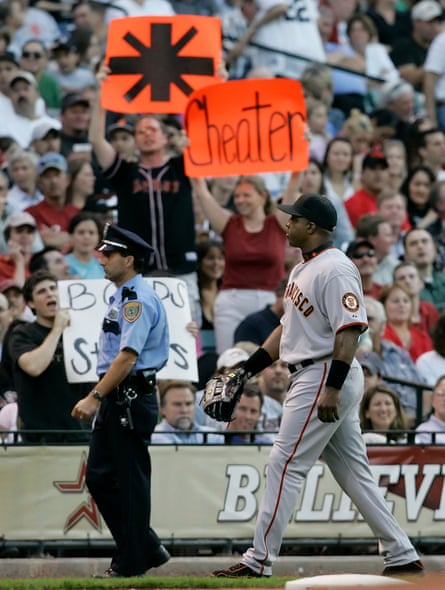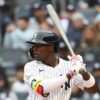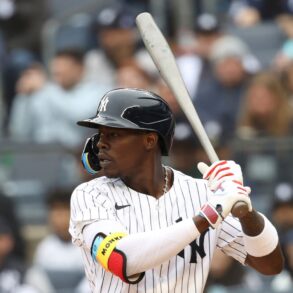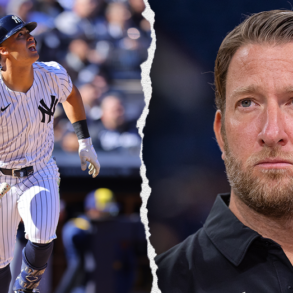In its brief moment of fame, the torpedo bat has made quite the impression in MLB. Over the weekend, the New York Yankees used the bat, designed by an MIT-educated professor, as an instrument of destruction against the hapless Milwaukee Brewers. Since then, I’ve heard about the bats so often that they’ve been showing up in my dreams. And that makes sense, because prior to this weekend, even in a bandbox like Yankee Stadium, even for a franchise that’s featured the likes of Babe Ruth, Lou Gheirig and Mickey Mantle, such home run power could only have been cooked up in the sweetest slumbers of their fanbase. Such a display of muscle was less video game and more cartoon, as in the famed 1946 Bugs Bunny clip that saw the Gas-House Gorillas rack up 46 straight runs against the genteel Tea Totallers.
In case you missed it, the Yankees, minus the 68 home runs of the now departed Juan Soto and the injured Giancarlo Stanton, provided a franchise record nine home runs in one game, 15 home runs across three games and 36 total runs against the Brewers. We’re talking about a Yankees team that coughed up five errors on Saturday and still won by 11 runs.
The torpedo bats, just about the only thing that could overshadow MLB’s botching of Opening Day thanks to the crashing of its own app, is another example of how over-innovation can ruin baseball. The engineers who came up with the bat are cousins of the stats savants who brought us the analytics which slowly sucked the entertainment out of the sport, and the physics experts who came up with scientifically altered pitchers which sank the 2024 batting averages of all but six teams to below .250.
The latest over-innovation moves the bulk of the wood in the bat to the customized area where the batter is most likely to hit the ball the hardest. The enlarged sweetspot, which gives a player a better chance of making good contact makes perfect sense, and frankly, it’s incredibly smart. And yes, hitters do need something, anything, to take back some of the game from the pitchers who have shrank batting averages for years. Now they have.
That said, 15 home runs in three games? That’s a problem. After the Yankees’ 12-3 win over the Brewers on Sunday, their radio voice Suzyn Waldman was trying to explain away the torpedo issue, by saying that it’s not new, that the exit velocity is similar between traditional and torpedo bats, that other teams use them and that the issue will be a talking point for a while until everyone moves on.
That’s partially true: other players around the league are toying with the bats, and it’s not entirely new. But New York, thanks to the 2022 hiring of the bat’s key brain, Aaron Leanhardt, who holds a postgraduate degree in physics from MIT, are seemingly more in on the torpedo bats than any other team. If New York – or any other teams who decide to adopt the bat – continue to hit like this over the long-term it will turn box scores into farces, and mess with the integrity of the game in a way we haven’t seen since the steroid era.
It should be said that some players and coaches from other teams don’t seem to have an issue with the new bats. “It’s still a human that has to hit it,” said Cleveland Guardians manager Stephen Vogt. “It’s not the bat hitting the homer.”
Swap “bat” for “PEDs”, and that’s a common defense for Barry Bonds’ election into the Hall of Fame. In this case, an important distinction is that the bats are totally legal, the Yankees have not broken any rules of the game. Coincidentally, Bonds’ early adoption of maple bats was, to a way lesser degree, somewhat controversial.

The reason he began using maple, and PEDs, is the same reason the torpedo bat is in the news today – players and teams are continuously looking for an edge. And right now the Yankees are getting it.
Now that we’re here, I have several questions. Will New York’s torrid stretch continue? Will this tech be adopted by other teams and players? If that happens, will more games become farcical? And should the bats be banned? If torpedo bats are banned – and there’s no indication that one is forthcoming – then why didn’t the Yankees wait until the playoffs to unveil their secret weapon? Now that would have surely wrestled back their “evil empire” label from the Dodgers.
There’s a caveat here. Aaron Judge smoked the Brewers – one of his four homers in the series went 468ft – without the torpedo bat. And then, on Monday, the Royals crushed the Brewers 11-1. As far as we know, the Royals don’t have torpedo bats, leading us to the conclusion that rather than being victims of technology, the Brewers are just … bad. But if the Yankees’ power-surge continues for another two weeks or so, MLB will probably have no choice but to ban the bats, legal or not, under the little used “best interests in baseball” clause. This would be another embarrassing mess for baseball, as Leanhardt told the Athletic that “it was a group effort, the results coming from conversations with coaches, players, MLB and bat makers.” So unless we’re all overreacting, MLB may have botched the rollout of this new tech by not unilaterally taking over the usage from the clubs.
The good news is that dialed down torpedo bats could actually serve as the long-term answer for suffering hitters. This could be vital for a sport which needs more dynamic offense and less of the increasingly predictable and boring three outcomes: a walk, strikeout or a home run. For now, much to the chagrin of Yankees fans, I’d put the toy back in the box, do the research and development in the minor leagues, and reintroduce a more refined product in a few seasons.
This post was originally published on this site be sure to check out more of their content.









